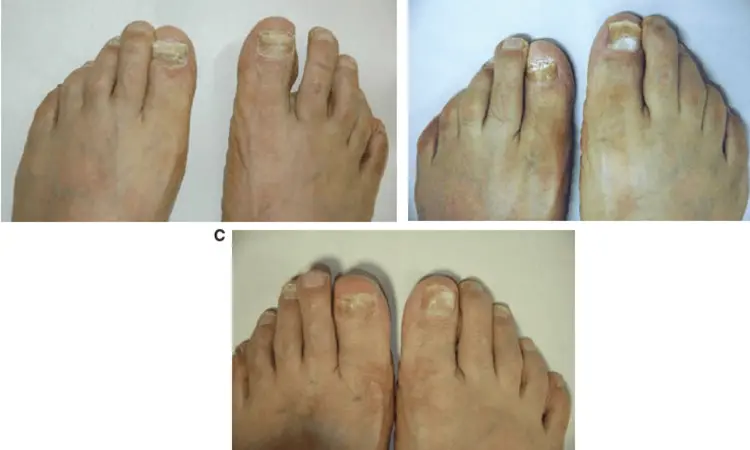- Home
- Medical news & Guidelines
- Anesthesiology
- Cardiology and CTVS
- Critical Care
- Dentistry
- Dermatology
- Diabetes and Endocrinology
- ENT
- Gastroenterology
- Medicine
- Nephrology
- Neurology
- Obstretics-Gynaecology
- Oncology
- Ophthalmology
- Orthopaedics
- Pediatrics-Neonatology
- Psychiatry
- Pulmonology
- Radiology
- Surgery
- Urology
- Laboratory Medicine
- Diet
- Nursing
- Paramedical
- Physiotherapy
- Health news
- Fact Check
- Bone Health Fact Check
- Brain Health Fact Check
- Cancer Related Fact Check
- Child Care Fact Check
- Dental and oral health fact check
- Diabetes and metabolic health fact check
- Diet and Nutrition Fact Check
- Eye and ENT Care Fact Check
- Fitness fact check
- Gut health fact check
- Heart health fact check
- Kidney health fact check
- Medical education fact check
- Men's health fact check
- Respiratory fact check
- Skin and hair care fact check
- Vaccine and Immunization fact check
- Women's health fact check
- AYUSH
- State News
- Andaman and Nicobar Islands
- Andhra Pradesh
- Arunachal Pradesh
- Assam
- Bihar
- Chandigarh
- Chattisgarh
- Dadra and Nagar Haveli
- Daman and Diu
- Delhi
- Goa
- Gujarat
- Haryana
- Himachal Pradesh
- Jammu & Kashmir
- Jharkhand
- Karnataka
- Kerala
- Ladakh
- Lakshadweep
- Madhya Pradesh
- Maharashtra
- Manipur
- Meghalaya
- Mizoram
- Nagaland
- Odisha
- Puducherry
- Punjab
- Rajasthan
- Sikkim
- Tamil Nadu
- Telangana
- Tripura
- Uttar Pradesh
- Uttrakhand
- West Bengal
- Medical Education
- Industry
Crisaborole Boosts Effectiveness of Amorolfine in Keratinized Tinea Foot: Study

Researchers have found in a new study that adding two percent crisaborole ointment to amorolfine hydrochloride cream significantly enhances therapeutic outcomes in the management of keratinized tinea foot. Tinea foot, a common superficial fungal infection caused by dermatophytes, often presents in a chronic keratinized form where thickened skin and scaling limit the penetration and efficacy of topical antifungal treatments.
Amorolfine hydrochloride, a well-established antifungal agent, is effective against dermatophytes but faces challenges in achieving optimal results in heavily keratinized lesions due to poor drug penetration. The study explored whether the phosphodiesterase-4 (PDE4) inhibitor crisaborole, known for its anti-inflammatory and skin barrier–modulating properties, could improve outcomes when combined with amorolfine.
The combination therapy demonstrated superior antifungal activity, greater improvement in lesion clearance, and better patient-reported symptom relief compared with amorolfine monotherapy.
The enhanced effectiveness is thought to stem from crisaborole’s ability to reduce inflammation, soften hyperkeratotic tissue, and improve drug absorption, thereby allowing amorolfine to penetrate more effectively into the infected areas. Importantly, the combination was well tolerated, with no significant increase in adverse effects, supporting its safety for clinical use. These findings suggest that dual therapy with crisaborole and amorolfine may provide a more effective option for patients with keratinized tinea foot, a condition that is often resistant to standard topical treatments and requires prolonged therapy.
The results also open avenues for exploring similar combination approaches in other keratinized fungal infections where topical antifungal penetration is limited. Clinicians may consider the combined regimen as part of personalized treatment strategies, particularly for patients with chronic or recurrent infections. However, the researchers emphasized the need for larger randomized controlled trials to validate these results, assess long-term efficacy, and determine whether the combination can reduce recurrence rates.
Dr. Shravani Dali has completed her BDS from Pravara institute of medical sciences, loni. Following which she extensively worked in the healthcare sector for 2+ years. She has been actively involved in writing blogs in field of health and wellness. Currently she is pursuing her Masters of public health-health administration from Tata institute of social sciences. She can be contacted at editorial@medicaldialogues.in.
Dr Kamal Kant Kohli-MBBS, DTCD- a chest specialist with more than 30 years of practice and a flair for writing clinical articles, Dr Kamal Kant Kohli joined Medical Dialogues as a Chief Editor of Medical News. Besides writing articles, as an editor, he proofreads and verifies all the medical content published on Medical Dialogues including those coming from journals, studies,medical conferences,guidelines etc. Email: drkohli@medicaldialogues.in. Contact no. 011-43720751


